 | TODAY IN SCIENCE HISTORY NEWSLETTER - 12 MAY |
| Feature for Today |
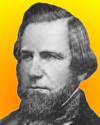 On 12 May 1803, William Howe, the American inventor of the Howe Truss for bridges widely used for decades by the expanding railroads of his time. On 12 May 1803, William Howe, the American inventor of the Howe Truss for bridges widely used for decades by the expanding railroads of his time.He was born in the same house in Spencer, Mass., as Tyler Howe, who invented bed springs, and Elias Howe who, after great persistence, devised an early sewing machine. Quite an inventive New England family! Which is the title of a 1909 article in Munsey's Magazine, which begins by introducing the Bemis part of their family tree, which included inventive men from whom the Howe's seem to have inherited the creative trait. Today's feature is the first part of the article about this Inventive New England Family, which provides a short biography for the William Howe and the Bemises. It links to the remainder of the article so later you can read about Tyler, and especially Elias, who is perhaps the best known of the three. |
| Book of the Day | |
| |
| Quotations for Today | |
 | "I became captivated by the edifices chemists had raised through experiment and imagination — but still I had a lurking question. Would it not be better if one could really 'see' whether molecules as complicated as the sterols, or strychnine were just as experiment suggested?" |
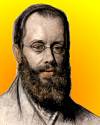 | "I am almost thanking God that I was never educated, for it seems to me that 999 of those who are so, expensively and laboriously, have lost all before they arrive at my age—& remain like Swift's Stulbruggs—cut and dry for life, making no use of their earlier-gained treasures:—whereas, I seem to be on the threshold of knowledge." |
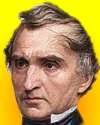 | "I have learnt that all our theories are not Truth itself, but resting places or stages on the way to the conquest of Truth, and that we must be contented to have obtained for the strivers after Truth such a resting place which, if it is on a mountain, permits us to view the provinces already won and those still to be conquered." |
| QUIZ | |
| Before you look at today's web page, see if you can answer some of these questions about the events that happened on this day. Some of the names are very familiar. Others will likely stump you. Tickle your curiosity with these questions, then check your answers on today's web page. | |
| Births | |
 |  Dorothy Hodgkin, born 12 May 1910, was an English chemist. A crystallographer of distinction, she was awarded the Nobel Prize for Chemistry in 1964 for her discoveries, by the use of X-ray techniques, of the structure of biologically important molecules. Dorothy Hodgkin, born 12 May 1910, was an English chemist. A crystallographer of distinction, she was awarded the Nobel Prize for Chemistry in 1964 for her discoveries, by the use of X-ray techniques, of the structure of biologically important molecules. Can you name one or more of these molecules? Can you name one or more of these molecules? |
 |  A German chemist born 12 May 1803 is most often remembered by the name of a design of distillation condenser he invented. Yet he made many important contributions to the early systematization of organic chemistry, to the application of chemistry to biology (biochemistry), to chemical education, and to the basic principles of agricultural chemistry. A German chemist born 12 May 1803 is most often remembered by the name of a design of distillation condenser he invented. Yet he made many important contributions to the early systematization of organic chemistry, to the application of chemistry to biology (biochemistry), to chemical education, and to the basic principles of agricultural chemistry. Can you name this chemist? Can you name this chemist? |
| Deaths | |
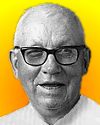 |  Roy J. Plunkett (1910-1994) was an American chemist who died leaving the world PTFE which he discovered by accident while working for DuPont. The trade name for this polymer is now so widely known, it has even been used satirically to describe an American President. Roy J. Plunkett (1910-1994) was an American chemist who died leaving the world PTFE which he discovered by accident while working for DuPont. The trade name for this polymer is now so widely known, it has even been used satirically to describe an American President. Can you give the common name for this polymer? Can you give the common name for this polymer? |
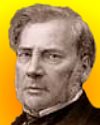 |  It was this French agricultural chemist, Jean-Baptiste Boussingault (1802-1887), who helped identify the basic scheme of the biological cycle of a particular element when he demonstrated that plants do not absorb the element from air but from the soil. It was this French agricultural chemist, Jean-Baptiste Boussingault (1802-1887), who helped identify the basic scheme of the biological cycle of a particular element when he demonstrated that plants do not absorb the element from air but from the soil. Can you name the element? Can you name the element? |
| Events | |
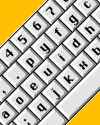 |  In 1936 a patent was issued for a new typewriter keyboard layout designed to maximize efficiency by placing common letters on the home row, and make the stronger fingers of the hands do most of the work. By contrast, the original QWERTY layout was designed for the earlier, less efficient typewriters. Previously, speed would result in two type bars hitting each other in their travel, so the original keyboard was laid out to reduce collisions. In 1936 a patent was issued for a new typewriter keyboard layout designed to maximize efficiency by placing common letters on the home row, and make the stronger fingers of the hands do most of the work. By contrast, the original QWERTY layout was designed for the earlier, less efficient typewriters. Previously, speed would result in two type bars hitting each other in their travel, so the original keyboard was laid out to reduce collisions. What is the name of this new keyboard? What is the name of this new keyboard? |
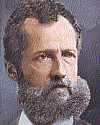 |  Ottmar Mergenthaler, a German-born American, received a U.S. patent for his linotype machine that set entire lines of lead type as "slugs" for printing. Typesetting was transformed by the introduction of these keyboard machines. This introduced a huge labor savings in typesetting, (about 85% reduction in time), and made obsolete the huge masses of hand-set metal type. The linotype machine was first used by the New York Tribune. Ottmar Mergenthaler, a German-born American, received a U.S. patent for his linotype machine that set entire lines of lead type as "slugs" for printing. Typesetting was transformed by the introduction of these keyboard machines. This introduced a huge labor savings in typesetting, (about 85% reduction in time), and made obsolete the huge masses of hand-set metal type. The linotype machine was first used by the New York Tribune. In what decade was the linotype machine first used by a newspaper? In what decade was the linotype machine first used by a newspaper? |
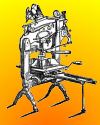 |  In 1816, the Columbian Press, the first printing press invented in America, was designed by George E. Clymer in Philadelphia, Pa. It was an iron horizontal platen hand-printing press using a system of compound levers that multiplied the pull of the operator to replace the iron screw previously used for downward pressure. A counterweight lifted the platen back after the pressman's "pull". Perhaps because it was the first such press invented in America, the counterweight was cast in a distinctive shape. In 1816, the Columbian Press, the first printing press invented in America, was designed by George E. Clymer in Philadelphia, Pa. It was an iron horizontal platen hand-printing press using a system of compound levers that multiplied the pull of the operator to replace the iron screw previously used for downward pressure. A counterweight lifted the platen back after the pressman's "pull". Perhaps because it was the first such press invented in America, the counterweight was cast in a distinctive shape. What was the shape of the counterweight? What was the shape of the counterweight? |
| Answers |
When you have your answers ready to all the questions above, you'll find all the information to check them, and more, on the May 12 web page of Today in Science History. Or, try this link first for just the brief answers. Fast answers for the previous newsletter for May 11: showed the rigidity of a rubber ring after cooled a glass of ice water; linotype - typesetting machine; a machine in which germinating seeds could be subjected to centrifugal force in either horizontal or vertical position; air pump; Polaroid camera; Siam. |
| Feedback |
 If you enjoy this newsletter, the website, or wish to offer encouragement or ideas, please send feedback by using your mail reader Reply button. If you enjoy this newsletter, the website, or wish to offer encouragement or ideas, please send feedback by using your mail reader Reply button. |
--
If you do not want to receive any more newsletters, Unsubscribe
To update your preferences and to unsubscribe visit this link


Δεν υπάρχουν σχόλια:
Δημοσίευση σχολίου